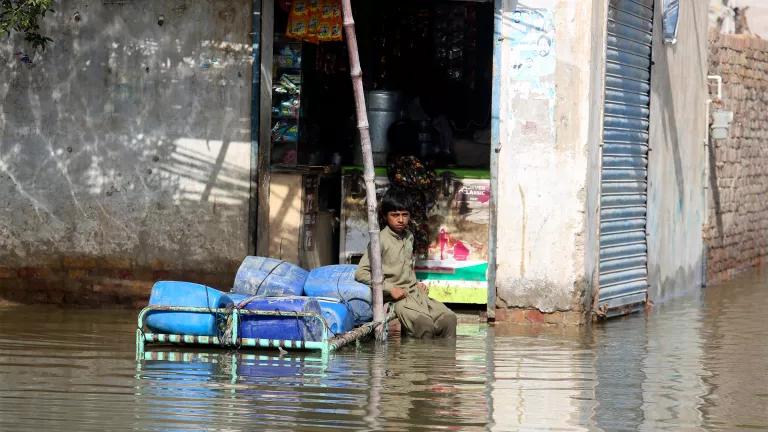Puerto Rico Communities Charge Forward with Solar Power
Environmental groups, including NRDC, work to help strengthen the archipelago’s climate resilience with community solar projects.

A rooftop solar microgrid installed by Resilient Power Puerto Rico
This blog was coauthored by Alejandra Castrodad-Rodriguez, acting executive director of Resilient Power Puerto Rico.
September 20, 2022, will mark five years since Hurricane Maria made landfall in Puerto Rico, causing the second-longest blackout in human history. While the impact of the storm itself was devastating, it was the failure of Puerto Rico’s electric infrastructure that led to significant loss of life. The years following the storm have seen an unprecedented wave of community-driven solarization projects across Puerto Rico aimed at improving climate resilience, eliminating pollution, and reducing energy costs.
From the outset, NRDC partnered with Resilient Power Puerto Rico (RPPR) to support these ongoing efforts, collaborating with local leadership to solarize key spaces in underserved and marginalized communities. Projects were initially focused on community centers that provide essential day-to-day services, and also serve as relief and recovery hubs after extreme weather events. Together, we solarized the Mini Oratorio Hijos de Don Bosco Community Center in the Caño Martín Peña. We followed up with a much larger project solarizing the Fortín Conde de Mirasol museum, a former Spanish fort on the island of Vieques that serves as a meeting area, radio station, and relief and recovery hub. These projects have increased access to the tools and resources for communities to proactively address their climate resilience.
In response to the continued unreliability of the power grid and onerous price hikes over the past 10 months, NRDC and RPPR have recently teamed up again. This time, the focus is on supporting services for vulnerable populations across Puerto Rico. While we are all vulnerable to the impacts of climate change, marginalized groups and people living in underserved communities endure greater harm following extreme events. Looking to bridge this gap, RPPR developed the Red de Redes program, teaming up with networks providing services to unhoused persons and survivors of gender violence. This initiative seeks to highlight the particular needs of groups that have not historically been front of mind in emergency situations.

From left: The Meson de Amor shelter for unhoused people in San Juan, Puerto Rico; newly installed solar panels from RPPR on its rooftop
In partnership with the service provider networks Coalición de Coaliciones Pro Personas Sin Hogar and Coordinadora Paz para las Mujeres, we are working to solarize shelters and other key facilities across the islands. The first step was the Solar Incubation Program, which is a series of workshops and technical assistance sessions where participants assessed their climate and energy needs, developed conceptual designs, and emerged with ready-to-build solarization proposals. We are completing the first three Red de Redes installations with the generous support of the Leon Lowenstein Foundation, and NRDC and RPPR will continue to fundraise together with the goal of financing as many of the proposals as possible.
As Puerto Rico continues to recover and rebuild, larger questions remain about what kind of electric system the islands will have. The $9.4 billion in disaster relief funds held by the Federal Emergency Management Agency (FEMA) are just trickling into the system. Many communities have voiced their strongly held belief that Puerto Rico needs to leave fossil fuels behind and have a decentralized, renewable, and distributed electric system, but others in the establishment are still pushing for Puerto Rico to rely on imported liquefied natural gas (LNG). The crisis in Europe has led LNG import prices to skyrocket, proving yet again that continued reliance on fossil fuels is a disastrous idea. What is clear is that communities have taken matters into their own hands, investing in renewable resources to move forward. Hopefully, efforts like ours will help accelerate Puerto Rico’s transition to clean energy while reducing communities’ vulnerability to climate change.




